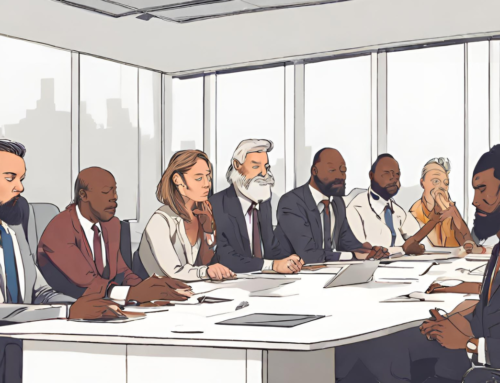Human interaction begins with the face – in the cradle. It’s the aspect of our fellow human beings we study the most because it’s where we get the most important emotional cues and signals about what the other person is intending. As infants, we start studying our mamas’ and papas’ faces for cues about life, food, and happiness. We basically never stop studying faces for the rest of our lives. (Including our own, as teenagers.) Of course, most of the knowledge we develop is unconscious. If you want to consciously master body language, you need to start with the face.
And what stories faces tell.
Begin at the top, with the forehead. Is it wrinkled or smooth? For most of us, our habitual attitude is expressed in our foreheads, especially after about age 30. The more wrinkles and the deeper they are, the more habitually open a person is likely to be.
That’s because when we open ourselves up to a conversation, an idea, or a new person, we raise our eyebrows. In the long run, then, if you spend a good deal of time openly inviting response, you’ll get forehead wrinkles.
In addition to the wrinkles (or not) in the forehead, notice how much the eyebrows move, how often, and how far. These are further signs of interest and openness.
Next move to the eyes. How open are they? Generally, the wider the eyes, the more interested in what we’re seeing we are. The more narrowed they eyes, the more suspicious or uninterested we’re likely to be.
But be sensitive to what’s going on in the room. Bright lights can cause people to squint, as well – so you need to establish a neutral baseline before you start drawing exciting conclusions. Within the eyes, the pupils are also reasonably reliable signals of interest. The bigger the pupils, the more interested the person is. But remember to take the environment into account.
Now study the nose. A wrinkled nose can indicate disgust or can be part of a sneer (with the mouth). Neither one indicates much good in the way of positive connection.
Then, move on to everyone’s favorite part of the face – the mouth. Because we take in so much through the mouth, it’s highly responsive, to food, flavors, air, smells (with the nose), kisses, and all the rest. There’s a basic retinue of smiles, frowns, sneers, disgust, and bit back emotions. For each person, beyond the basics, you need to study the individual variations so that you can understand the detail of what the person is emoting. We all vary a little, from mouth to mouth and emotion to emotion. There are real and fake smiles, and a thousand degrees of intensity in facial expressions, and the mouth is involved in most of them.
Finally, take in the whole face for a moment. How we orient our heads toward each other in space is extraordinarily revealing of our degree of openness toward one another and the strength of our connections. We move our heads away and out of the plane of the other person, either up or down, when we’re thinking or withdrawing in some way — from anger, fear, or a host of other possible negative emotions. Once the other person is done talking or thinking, watch where the head goes. If the person makes strong eye contact and turns her head back toward yours, the answer is yes. Otherwise the answer may be no.
If the other person is a spouse or close friend, he or she may want to convey simultaneously that the current answer is “no,” say, but that a strong connection endures. In that case, the head may signal yes to the loved one to indicate the long-term relationship, while saying “no” to the immediate topic. Understanding the full meaning of facial gesture requires a deep understanding of the person in question, the nature of the relationship, and the intent both short and longer term.








Yes, yes, yes! I was once told by one of my speech coaches that the key to identifying if someone really “means” what they say is in the eyebrows. How engaged are they? And, as someone with a LOT of DEEP forehead wrinkles… I’m so glad it means I’m open as well as just getting older. :)
Thanks, Sally, and thanks for relaying that comment from (obviously) a very wise coach. Just say no to Botox!
Interesting to hear your take on a simultaneous but conflicting message with spouses and old friends – intriguing!
Thanks, Sandy, for your comment.
Excellent! A fifty-something, I have a lot of forehead wrinkles, which I like to think is because I’m open, learning, and listening intently. I do often lift my eyebrows in interest and inquisitiveness. I notice that often the other person in the conversation will mirror this expression, which seems to activate interactive energy and openness of their own.
Hi, Lynn — yes, keep exercising those eyebrows! They keep you engaged in the world — and they keep others engaged too. When someone shows openness to us and our ideas, it’s hard not to respond with reciprocal interest.